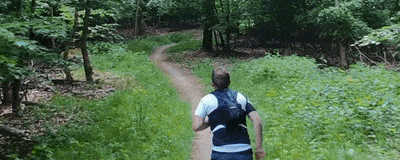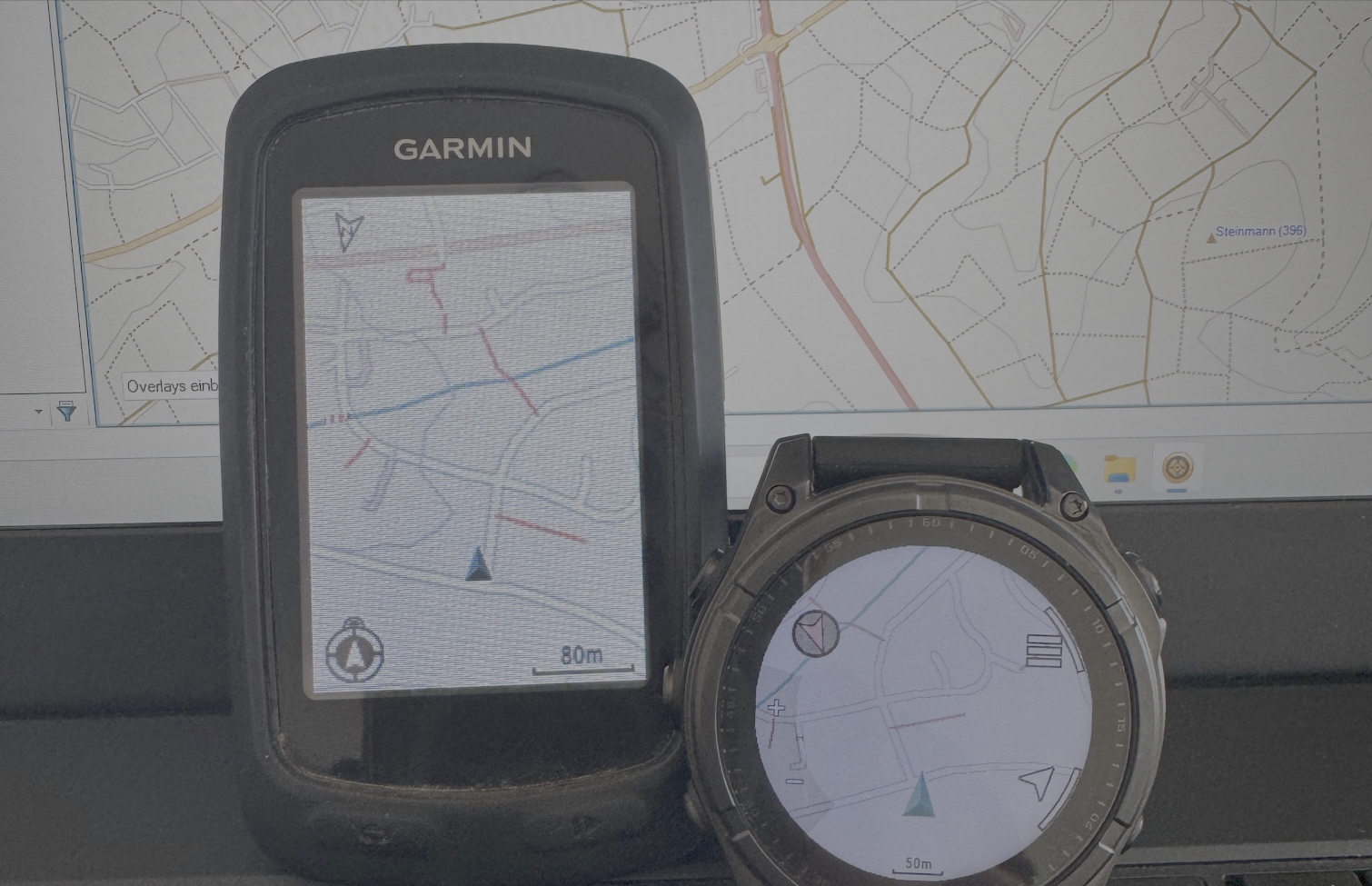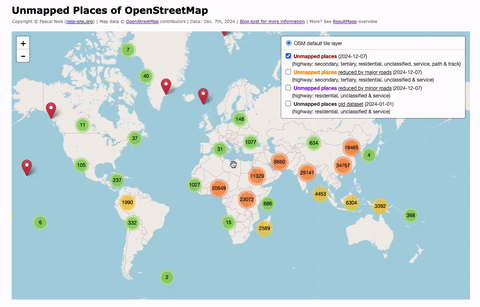Tag: OSM
-

From Sky to Trail: Testing GPS Accuracy with Drones, Action Cam and Smartwatch
In the early days of mapping and cartography experiments, GPS tracks were often the starting point. Contributors to the OpenStreetMap (OSM) project, especially before 2010, relied heavily on GPS devices. They would walk or cycle routes and later upload their recorded tracks and observations to OSM. Today, GNSS-capable devices are everywhere: smartphones, smartwatches, action cams,…
-

Building My Own Garmin™ Maps for Outdoor Activities Based on OpenStreetMap Data
For many years, I’ve used pre-made Garmin maps from the internet on my devices while hiking, running, or mountain biking. These maps have always been based on data from the OpenStreetMap (OSM) project. In the early days, a map of Europe was just a few hundred megabytes in size and usually fit comfortably on the…
-

Unmapped Places of the OpenStreetMap World – 2024
In 2010, I first conducted a study which identified regions (places) in the OpenStreetMap (OSM) project in Germany that still had potential for more detailed mapping. Later, in 2016, this analysis was repeated and extended to the entire world. I have since regularly carried out these studies and published the results. The algorithm and some…
-

OpenData vom Bundesamt für Kartographie und Geodäsie vs. Crowdsourced OpenStreetMap in Deutschland – Ein Vergleich Offener Daten
Nach knapp 1.000 Tagen Abstinenz (endlich?) mal wieder ein Blog Post von mir. Aufgrund des inhaltlichen und räumlichen Bezugs diesmal auf deutsch. Ein „offizieller offener“ Datensatz von einer Bundesbehörde? Gut, wie sieht’s im Vergleich zu gemeinsam zusammengetragen Daten aus, z.B. OpenStreetMap? Lassen sich Unterschiede in der Qualität feststellen? Sind die Datensätze womöglich auf Augenhöhe oder…
-
#100 – Thank you!
While I was working on my latest blog post, I realized that I had already written 100 posts over the past nine years. All posts have one thing in common: They are about the well-known and maybe never ending OpenStreetMap project …
-
New metric for measuring the “qualitative nature” of OpenStreetMap activities @ How did you contribute ?
Back in June we had a twitter chat about potential new features for the “How did you contribute to OpenStreetMap” (HDYC) website. One suggestion was to “show more relevant information about skills, tagging system or the quality of contributions” of a project member …
-
Additional insights about OSM changeset discussions: Who requests, receives and responds?
Last year I wrote two blog posts about the OpenStreetMap (OSM) feature that allows commenting on contributor map changes within a changeset. The first blog post showed some general descriptive statistics about the number of created changeset discussions …
-
Public profiles on “How did you contribute to OSM?”
The web page “How did you contribute to OpenStreetMap?” (HDYC) provides individual detailed information about project members. Some time ago, the page has been revised, that member profiles can only be accessed, when users logged in with their OpenStreetMap (OSM) user account. This feature has been implemented, after a long…
-
Processing compressed OpenStreetMap Data with Java
This blog post contains a summary on how you can write your own Java classes to process OpenStreetMap (OSM) pbf files. PBF is a compression format, which is nowadays more or less the standard utilized for reading and writing OSM data quickly. In the OSM world, many tools and programs implemented this file format…
-
Review requests of OpenStreetMap contributors
– How you can assist! –The latest version of the OpenStreetMap editor iD has a new feature: “Allow user to request feedback when saving”. This idea has been mentioned in a diary post by Joost Schouppe about “Building local mapping communities” (at that time: “#pleasereview”) in 2016. The blog post also contains some…